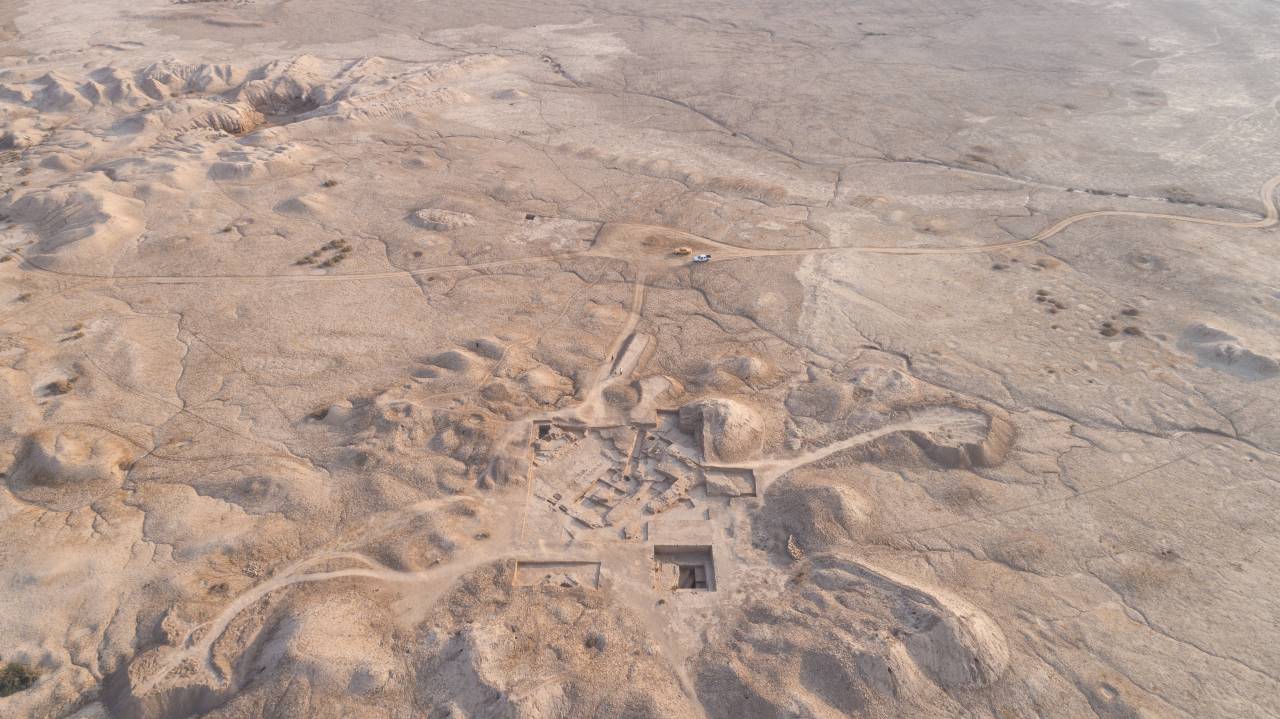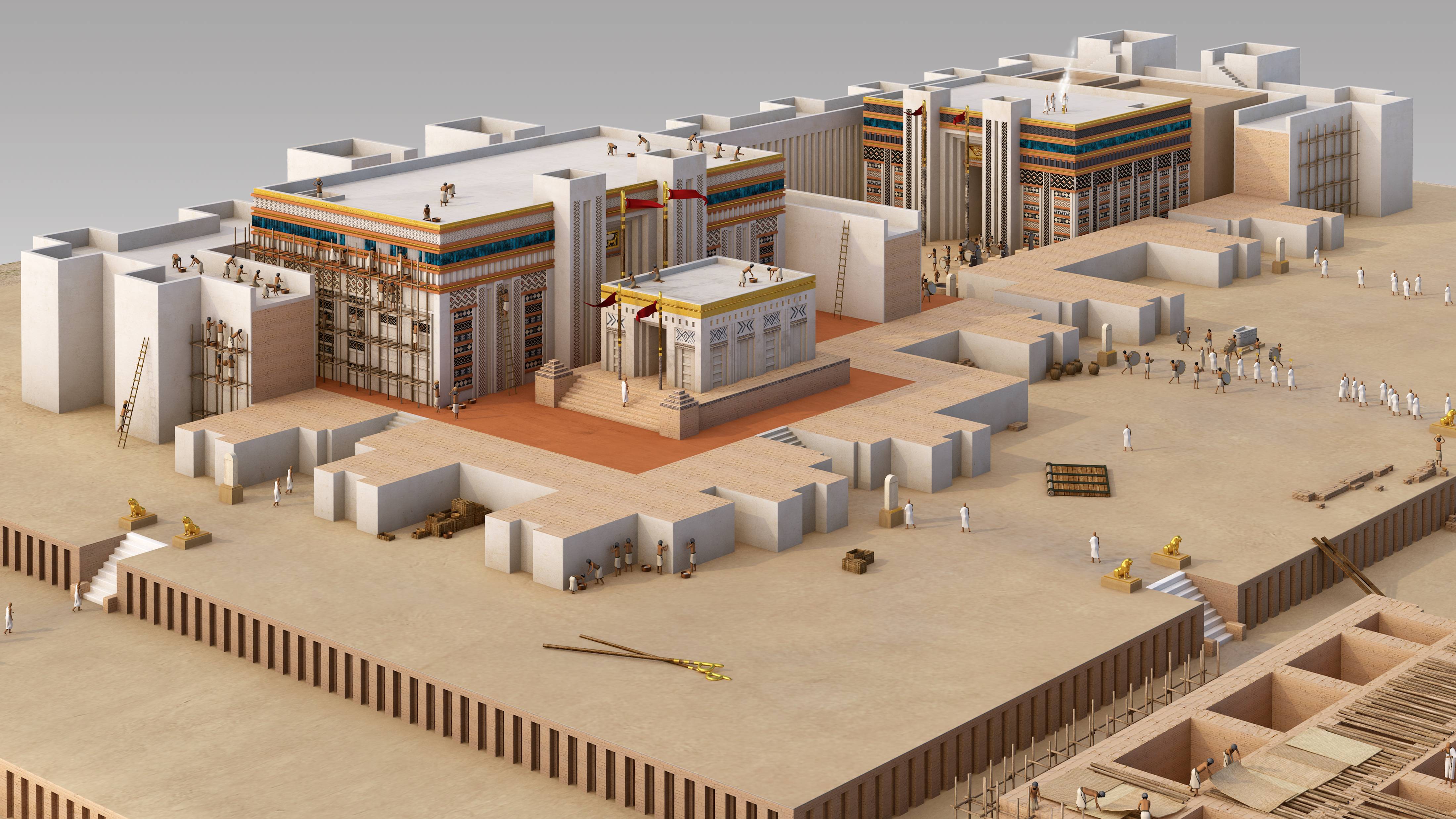4,500-year-old Sumerian temple dedicated to mighty thunder god discovered in Iraq
Archaeologists have unearthed the remains of a 4,500-year-old Sumerian temple at the heart of the ancient city of Girsu, in southeastern Iraq.
Archaeologists in Iraq have unearthed the remains of a 4,500-year-old Sumerian temple dedicated to Ningirsu, the Mesopotamian god of springtime thunder, the British Museum has reported.
The long-lost temple was built out of mud brick and was the spectacular centerpiece of the ancient city of Girsu, now an archaeological site known as Tello.
"At the heart of the city of Girsu, we have discovered — and are still currently excavating — one of the most important sacred spaces of all ancient Mesopotamia: a temple dedicated to the chief god of Girsu," Sebastien Rey, a curator of ancient Mesopotamia and lead archaeologist at the British Museum in London, said in a presentation of the findings.
Girsu was a bustling cultural center at the heart of Mesopotamia — a broad area between the rivers Euphrates and Tigris including Iraq, eastern Syria, southeastern Turkey, part of western Iran and Kuwait, and home to some of the first civilizations. The Sumerians were possibly the oldest civilization in the world and the first to establish religion and a code of law.
French archaeologist Ernest de Sarzec first discovered the remains of Girsu in 1877 and removed all the artifacts he could find, including a 4,000-year-old statue of the Sumerian king Gudea, who ruled the city at the end of the third millennium B.C. As a result, many people thought that there was nothing left to excavate. Multiple periods of conflict have also prevented scientists from accessing the site in the Dhi Qar province of southern Iraq. Rey and his team, however, could not shake the idea that Girsu had more secrets to reveal.
Related: Ancient Egyptian temple to the sun cult uncovered near Cairo
"After the Second World War and years of conflict that followed later in Iraq, the site of Girsu fell into semi-oblivion," Rey said. "It is not fanciful to say today that Girsu is probably one of the most important heritage sites in the world that very few people know about."
Get the world’s most fascinating discoveries delivered straight to your inbox.
Now, more than a century after archaeologists last explored the remarkable site, Rey's team has unearthed the vast temple. Archaeologists used remote sensing techniques to reveal features of the site buried under sand and other deposits. They also created digital elevation models to understand how the landscape has changed since the excavations of the 19th century.
"After five seasons of excavations at the temple site, we were able to uncover a large area of this ancient sanctuary, including the inner sanctum, a ceremonial square, an interior wall which featured a gate, and we were also able to identify and excavate part of the inclosure wall of the religious complex, including a monumental gate," Rey said.
The temple, referred to in ancient inscriptions as Enninu or the "White Thunderbird," housed the sacred statue of the hero thunder god Ningirsu, one of the most important gods of the Sumerian pantheon. The Sumerians believed that Ningirsu held power over spring thunder, rainstorms and floods, as well as commanding the plow and plowing of the land, according to the British Museum.
Remarkably, the newly unearthed walls surrounding the sacred site perfectly match a map carved into the statue of king Gudea found during the early excavations.
"Enninu, the White Thunderbird, is the oldest temple for which we have detailed inscriptions — an archaic plan carved into the statue of the king," Rey said. "We were able to test our theory by opening a series of excavation soundings and identifying, for example, the foundations of a temple gate exactly where we predicted the temple gate would be, according to the 4,000-year-old plan."

Sascha is a U.K.-based staff writer at Live Science. She holds a bachelor’s degree in biology from the University of Southampton in England and a master’s degree in science communication from Imperial College London. Her work has appeared in The Guardian and the health website Zoe. Besides writing, she enjoys playing tennis, bread-making and browsing second-hand shops for hidden gems.




